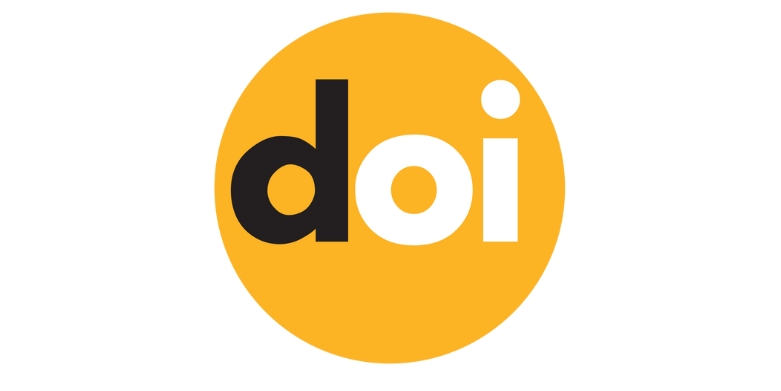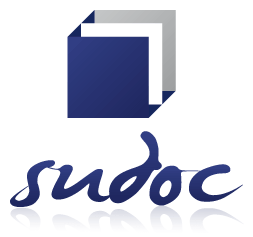The Effect of Picture-word Inductive Method on Learning English Vocabulary
DOI:
https://doi.org/10.63053/ijhes.44Abstract
This study aimed to investigate the effect of picture-word method on learning and retention of English vocabulary among the tenth graders in Ardabil. The sample of the study consisted of 50 tenth-grade female students from a high school. They were randomly assigned to two groups of twenty-five students (one experimental group and one control one). The picture-word method was used to the experimental group while the traditional method was used with the control one. A pre-test and a post-test were used then the scores were analyzed using independent sample t-test. The results indicated that in pre-test, two groups might have been equal in terms of vocabulary knowledge, but in post-test the experimental group outperformed the control group. This showed the positive effect of picture-word method on learning English vocabulary.
References
-Alemi, M. & Tayebi, A. (2011). The influence of incidental and intentional vocabulary acquisition and vocabulary strategy use on learning L2 vocabularies. Journal of Language Teaching and Research, 2(1), 81-98.
-Arifur Rahman, Ngee, T. Y. & Ramiza Darmi (2018). The association between vocabulary size and language dominance of bilingual Malay-English undergraduates. 3L: The Southeast Asian Journal of English Language Studies, 24(4), 85 – 101.
-August, D., M. Carlo, C. Dressler, and C. Snow. (2005). The critical role of vocabulary
development for English language learners. Learning Disabilities: Research & Practice 20 (L), 50-57.
-Banta, J. G. (2004). Reading pictures: Searching for excellence in picture books. In The Newberry and Caldecott Awards (Eds.), A Guide to the medal and Honour Books (pp. 9-18). Chicago, IL: ALA Editions.
-Bhargava, R. (2013). Effect of concept attainment model on achievement in social sciences. International Journal of Science and Research, 5(5), 699-701.
-Biemiller, A. (2010). Vocabulary development and implications for reading problems. In A. McGill-Franzen & R. Allington (Eds.), Handbook of reading disabilities research (pp. 208-218). New York, NY: Routledge.
-Billing, H. (2013). Effect of Indutive Thinking Model on achievement motivation of students in relation to their learning approach. International Journal of Education and
Psychological Research, 2(4), 49-59.
Bruner, J. S., Goodnow, J. J.& Austin, G. A. (1967). A study of thinking. New York, NY: Science Editions.
-Calhoun, E. F. (1999). Teaching beginning reading and writing with the picture word inductive model. Alexandria, VA: Association for Supervision and Curriculum Development (ASCD). Retrieved from: http://search.proquest.com/docview/62507922?accountid=10901 3L: The Southeast Asian Journal of English Language Studies – Vol 25(4): 179 – 197 http://doi.org/10.17576/3L-2019-2504-11
-Calhoun, E., Poirier, E. T., Simon, N. & Mueller, L. (2001). Teacher and district research: Three inquiries into the picture word inductive model. Paper presented at the annual meeting of the American Educational Research Association. Seattle, WA.
-Cuevas, J. & Dawson, B. L. (2018). A test of two alternatives cognitive processing models: Learning styles and dual coding. Theory and Research in Education, 16(2), 44–64.
-Feng, C. (2011). The cooperative classroom: Scaffolding EFL elementary learners’ English literacies through the picture word inductive model – the journey of three teachers in Taiwan (Doctoral dissertation). University of Toronto, Toronto, Canada. Retrieved from https://tspace.library.utoronto.ca/handle/1807/27578.
-Harahap, N. Y. (2018). The effect of picture sequences strategy on students’ writing procedure text ability. (A study at the eleventh grade students’ of MAN Sipagimbar). Jurnal Language Intelligence and Educational Research, 1(1), 126-145.
-Hunt, A. & Beglar, D. (2005). A framework for developing EFL reading vocabulary. Reading in a Foreign Language, 17(1), 23-59.
-Jack C. Richards, John Platt, & Heidi Platt (1992).Dictionary of Language Teaching &
Applied Linguistics.
-Jiang, X. (2014). Vocabulary learning through use of the Picture-Word Inductive Model for young English learners in China: A mixed methods examination using cognitive load theory (Doctoral Dissertation). University of Florida, Florida, USA.
-Jiang, X. (2015). Exploring seventh graders’ perceptions of the Picture-Word Inductive Model in their English narrative writing in China. In S. M. Nielsen (Ed.), Proceedings of the 14th Annual South -Florida Education Research Conference (pp. 76-84). Miami, FL. Retrieved from:
http://digitalcommons.fiu.edu/cgi/viewcontent.cgi?article=1481&context=sferc)
Joyce, B., & Showers, B. (2002). Student achievement through staff development.
Alexandria, VA: Association for Supervision and Curriculum Development.
-Joyce, B., & Weil, M. (2004). The picture-word inductive model: Developing literacy
across the curriculum. In B. Joyce & M. Weil (Eds.), Models of teaching(7 th ed.). Boston, MA: Pearson Education.
-Joyce, B., Weil, M., & Calhoun, E. (2009). Models of teaching (8 th ed.). Boston, MA: Pearson Education
-Joyce, B., Weil, M.& Calhoun, E. (2015). Models of teaching (9th ed.). Boston: Pearson Education Inc.
-Joyce, B. & Calhoun, E. (1998). Learning to teach inductively. Boston: Allyn & Bacon.
-Kartika, Z. (2013). Improving students’ writing descriptive text by using the Picture Word Inductive Model (PWIM). Jurnal Pendidikan dan Pembelajaran, 2(5), 1-11.
-Kaur, R. (2018). To study the effectiveness of concept attainment model of teaching on achievement of secondary school students in chemistry. Scholarly Research Journal for Humanity, Science & English Language, 5(25), 6858-6863.
-Kurniawan, S. (2015). Picture Word Inductive Model (PWIM) strategy in writing descriptive paragraphs. Jurnal Universitas Islam Riau, 2(2), 31-41.
-Li, X. (2011). The Picture Word Inductive Model and English vocabulary acquisition: A Study in a Swedish primary school (Unpublished Master’s Thesis). Kristianstad University, Sweden.
-McDonald, K. A. (2010). The Picture Word Inductive Model: An effective model for vocabulary instruction (Master’s Thesis). The University of British Columbia, Vancouver, Canada.
-McKeown, M. G. & Beck, I. L. (2014). Effects of vocabulary instruction on measures of language processing: Comparing two approaches. Early Childhood Research Quarterly, 29, 520-530.
Nation, P. (1990). Teaching and learning vocabulary. New York, NY: Newbury House.
Nation, P. (2001). Learning Vocabulary in Another Language, Cambridge, New York, Cambridge University Press. Neuman, S. B. & Kaefer, T. (2018). Developing low-income children’s vocabulary and content knowledge through a shared book reading program. Contemporary Educational Psychology, 52, 15-24.
-Noorli Khamis & Imran-Ho Abdullah (2018). What do different word lists reveal about the lexical features of a specialised language? 3L: The Southeast Asian Journal of English Language Studies, 24(3), 26 – 42.
Nurani, S.& Rosyada, A. (2017). Implemented PWIM in developing students’ communicative competence of SMK Islam Wijaya Kusuma Jakarta. Lingua Cultura, 11(1), 25-30.
-Swartzendruber, K. L (2007). The Picture Word Inductive Model and vocabulary acquisition (Unpublished M.Ed. Thesis). Wichita State University, Kansas, USA.
-Tan, D. A. L. (2016). Trends in second/foreign language teaching and learning: The position assigned to the learning of lexis over the years. Advances in Language and Literary Studies, 7(6), 84-90.
-Vaidya, C. J. & Gabrieli, J. D. E. (2000). Picture superiority in conceptual memory: Dissociative effects of encoding and retrieval tasks. Memory and Cognition, 28(7), 1165-1172.
-Wahyuni, E. F. (2016). The use of the Picture Word Inductive Model (PWIM) to improve students’ vocabulary achievement at MTs Assyafi’iyah Gondang (Unpublished Master’s Thesis). State Islamic Institute, Indonesia.
-Walsh, M. (2003). ‘Reading’ pictures: What do they reveal? Young children’s reading of visual texts. Reading Literacy and Language, 37(3), 123-130.
Yurfalah, D. (2014). The use of Picture Word Inductive Model in teaching vocabulary: A study at the seventh grade students of a state junior high school in Cidaun Cian
Downloads
Published
How to Cite
Issue
Section
License
Copyright (c) 2023 Authors

This work is licensed under a Creative Commons Attribution 4.0 International License.
The journal is licensed under a Attribution 4.0 International (CC BY 4.0).
You are free to:
- Share — copy and redistribute the material in any medium or format for any purpose, even commercially.
- Adapt — remix, transform, and build upon the material for any purpose, even commercially.
- The licensor cannot revoke these freedoms as long as you follow the license terms.
Under the following terms:
- Attribution - You must give appropriate credit , provide a link to the license, and indicate if changes were made . You may do so in any reasonable manner, but not in any way that suggests the licensor endorses you or your use.
- No additional restrictions - You may not apply legal terms or technological measures that legally restrict others from doing anything the license permits.












